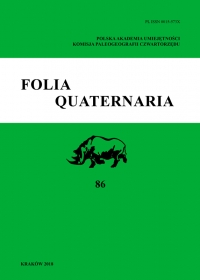Archaeobotanical analysis of abundant cereal finds from Kraków Nowa-Huta Mogiła 62 – getting back to the old story
Archaeobotanical analysis of abundant cereal finds from Kraków Nowa-Huta Mogiła 62 – getting back to the old story
Author(s): Magda Kapcia, Aldona Mueller-BieniekSubject(s): Archaeology
Published by: Wydawnictwo Uniwersytetu Jagiellońskiego
Keywords: storage; sprouted wheats; Neolithic; Funnel Beaker culture; S Poland; museum collection;
Summary/Abstract: A large assemblage of charred cereal grains was found at the multicultural site Kraków Nowa Huta – Mogiła 62 during a rescue excavations performed in the late 1960s. It provided valuable source of material for archaeobotanical and stable isotope studies. Both current botanical analyses of six subsamples and new radiocarbon dates of the top and the bottom of the layer indicated their Middle Neolithic origin (the Funnel Beaker culture). Despite the earlier suspicion that the material was disturbed by the construction work, the field documentation stored in the Archaeological Museum and the new archaeobotanical analyses indicate that the layer with the cereal grains, which was found at the depth of 300–330 cm was in fact, undisturbed. The cereals (mostly emmer with admixture of einkorn) were stored in a form of spikelets (as indicated by proportions of chaff and grains) and the assemblage was a final product of harvest cleaning (as suggested by low number of arable weeds). Values of stable carbon and nitrogen ratios suggest that the storage contained cereals originated from plots of different level of manuring and similar soil moisture, however more isotopic measurements are necessary to confirm that hypothesis. It is also supported by different proportions of taxa in the studied subsamples. Most of the emmer grains were sprouted before charring. We assume the grain was spoilt by excessive humidity of the storage conditions.
Journal: Folia Quaternaria
- Issue Year: 2018
- Issue No: 86
- Page Range: 217-231
- Page Count: 15
- Language: English

